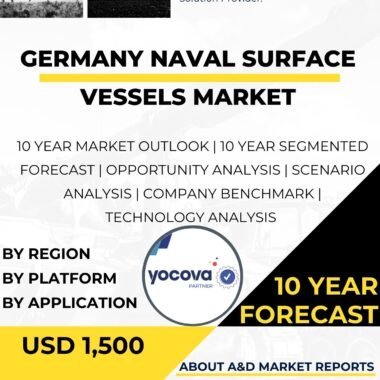Description
The Belgium naval surface vessels market is a vital sector within the country’s defense industry. Naval surface vessels play a crucial role in safeguarding maritime interests, ensuring national security, and projecting power at sea. Belgium recognizes the importance of a capable and modern fleet of naval surface vessels to protect its territorial waters, support international peacekeeping operations, and contribute to collective defense efforts.
The primary driver for the Belgium naval surface vessels market is the need for maritime security and protection of national interests. Naval surface vessels are essential for conducting a wide range of missions, including maritime surveillance, patrol and interdiction operations, search and rescue missions, and humanitarian assistance. These vessels serve as a visible deterrent and provide the capability to respond rapidly to any threat in Belgium’s maritime domain.
Belgium’s domestic defense industry plays a significant role in the development, construction, and maintenance of naval surface vessels. Belgian shipbuilding companies, such as Damen Schelde Naval Shipbuilding and Jan De Nul Group, have extensive experience in constructing various types of naval surface vessels. These companies contribute to Belgium’s defense capabilities and stimulate economic growth through job creation and technology transfer.
Collaborations with international partners and suppliers are crucial for the Belgium naval surface vessels market. Belgium frequently engages in partnerships with defense companies from NATO member states and other allied nations to access advanced shipbuilding technologies, benefit from joint research and development programs, and ensure interoperability with allied naval forces. These collaborations allow Belgium to leverage global advancements in naval surface vessels, enhancing its capabilities and fostering defense cooperation with allied nations.
Belgium’s participation in multinational naval initiatives and organizations also influences the naval surface vessels market. Collaboration within NATO and other international naval cooperation programs promotes interoperability, joint exercises, and the exchange of best practices. These interactions enhance Belgium’s naval capabilities, strengthen relationships with allied forces, and contribute to regional and global security.
The Belgium naval surface vessels market faces several challenges, including technological advancements, operational requirements, and cost-effectiveness. Technological advancements in naval surface vessels, such as improved hull designs, propulsion systems, weapons, and sensor integration, require continuous research and development efforts. Belgium must stay at the forefront of innovation to provide state-of-the-art naval surface vessels that meet evolving defense requirements.
Operational requirements heavily influence the design and capabilities of naval surface vessels. Belgium’s defense industry must consider factors such as the country’s geographic location, maritime threats, and international commitments when developing and acquiring naval surface vessels. Flexibility, versatility, and the ability to operate in diverse environments are essential characteristics for naval surface vessels to effectively fulfill their missions.
Cost-effectiveness is an important consideration in the acquisition, operation, and maintenance of naval surface vessels. Belgium’s defense industry must balance the cost of developing and maintaining these vessels with the need for advanced capabilities. Efficient resource allocation and prudent budget management are necessary to ensure the sustainability of the naval surface vessels market.
In conclusion, the Belgium naval surface vessels market is a vital sector within the country’s defense industry. Naval surface vessels play a crucial role in protecting maritime interests, maintaining national security, and supporting international peacekeeping efforts. Domestic capabilities, collaborations with international partners, and Belgium’s participation in multinational naval initiatives drive the growth and development of the naval surface vessels market. As defense requirements evolve and technological advancements continue, the demand for advanced and versatile naval surface vessels is expected to increase, fostering innovation, collaboration, and economic growth within the sector.




